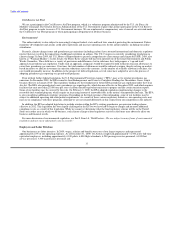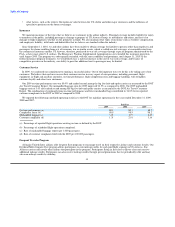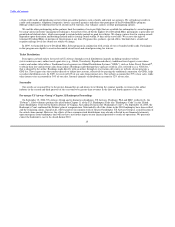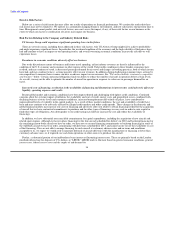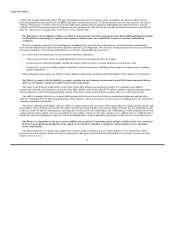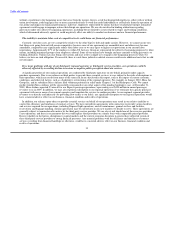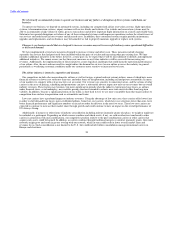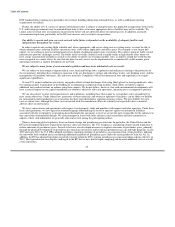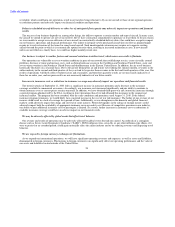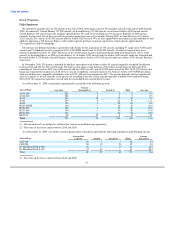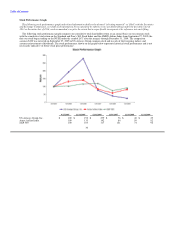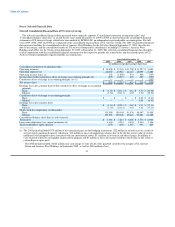US Airways 2009 Annual Report Download - page 23
Download and view the complete annual report
Please find page 23 of the 2009 US Airways annual report below. You can navigate through the pages in the report by either clicking on the pages listed below, or by using the keyword search tool below to find specific information within the annual report.
Table of Contents
The loss of key personnel upon whom we depend to operate our business or the inability to attract additional qualified personnel
could adversely affect the results of our operations or our financial performance.
We believe that our future success will depend in large part on our ability to attract and retain highly qualified management, technical
and other personnel, particularly in light of reductions in headcount associated with cost-saving measures that we have implemented. We
may not be successful in retaining key personnel or in attracting and retaining other highly qualified personnel. Any inability to retain or
attract significant numbers of qualified management and other personnel could adversely affect our business.
We may be adversely affected by conflicts overseas or terrorist attacks; the travel industry continues to face ongoing security
concerns.
Acts of terrorism or fear of such attacks, including elevated national threat warnings, wars or other military conflicts, including the
wars in Iraq and Afghanistan, may depress air travel, particularly on international routes, and cause declines in revenues and increases in
costs. The attacks of September 11, 2001 and continuing terrorist threats and attempted attacks materially impacted and continue to
impact air travel. Increased security procedures introduced at airports since the attacks and other such measures as may be introduced in
the future generate higher operating costs for airlines. The Aviation Security Act mandates improved flight deck security; deployment of
federal air marshals on board flights; improved airport perimeter access security; airline crew security training; enhanced security
screening of passengers, baggage, cargo, mail, employees and vendors; enhanced training and qualifications of security screening
personnel; additional provision of passenger data to U.S. Customs and enhanced background checks. A concurrent increase in airport
security charges and procedures, such as restrictions on carry-on baggage, has also had and may continue to have a disproportionate
impact on short-haul travel, which constitutes a significant portion of our flying and revenue. We would also be materially impacted in
the event of further terrorist attacks or perceived terrorist threats.
Changes in government regulation could increase our operating costs and limit our ability to conduct our business.
Airlines are subject to extensive regulatory requirements. In the last several years, Congress has passed laws, and the DOT, the FAA,
the TSA and the Department of Homeland Security have issued a number of directives and other regulations. These requirements impose
substantial costs on airlines. On October 10, 2008, the FAA finalized new rules governing flight operations at the three major New York
airports. These rules did not take effect because of a legal challenge, but the FAA has pushed forward with a reduction in the number of
flights per hour at LaGuardia. The FAA is attempting to work with carriers on a voluntary basis to implement its new lower operations
cap at LaGuardia. If this is not successful, the FAA may resort to other methods to reduce congestion in New York. Additionally, the
DOT recently finalized a policy change that will permit airports to charge differentiated landing fees during congested periods, which
could impact our ability to serve certain markets in the future. The new rule is being challenged in court by the industry. The Obama
Administration has not yet indicated how it intends to move forward on the issue of congestion management in the New York region.
The FAA from time to time issues directives and other regulations relating to the maintenance and operation of aircraft that require
significant expenditures or operational restrictions. Some FAA requirements cover, among other things, retirement of older aircraft,
security measures, collision avoidance systems, airborne windshear avoidance systems, noise abatement, fuel tank inerting, crew
scheduling and other environmental concerns, aircraft operation and safety and increased inspections and maintenance procedures to be
conducted on older aircraft. Our failure to timely comply with these requirements can result in fines and other enforcement actions by the
FAA or other regulators. For example, on October 14, 2009, the FAA proposed a fine of $5.4 million with respect to certain alleged
violations and we are in discussions with the agency regarding resolution of this matter. Additionally, new proposals by the FAA to
further regulate flight crew duty times could increase our costs and reduce staffing flexibility.
Additional laws, regulations, taxes and policies have been proposed or discussed from time to time, including recently introduced
federal legislation on a "passenger bill of rights," that, if adopted, could significantly increase the cost of airline operations or reduce
revenues. The state of New York's attempt to adopt such a measure has been successfully challenged by the airline industry. Other states,
however, are contemplating similar legislation. The
21


